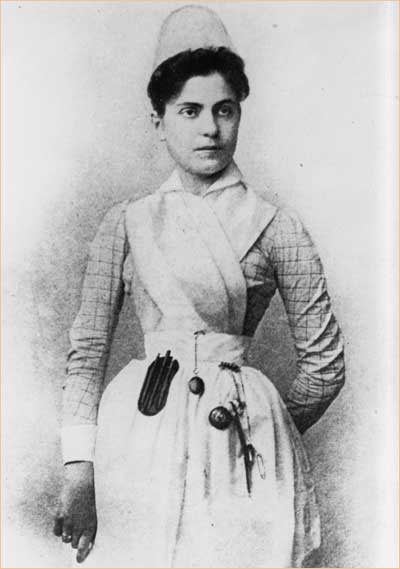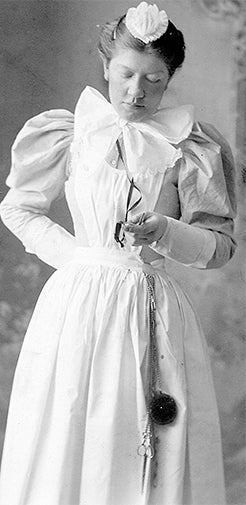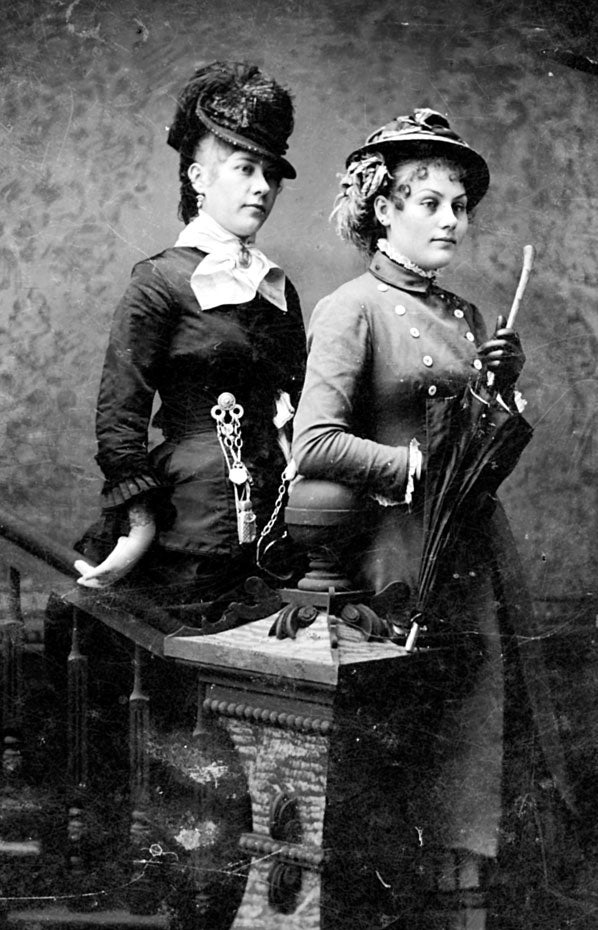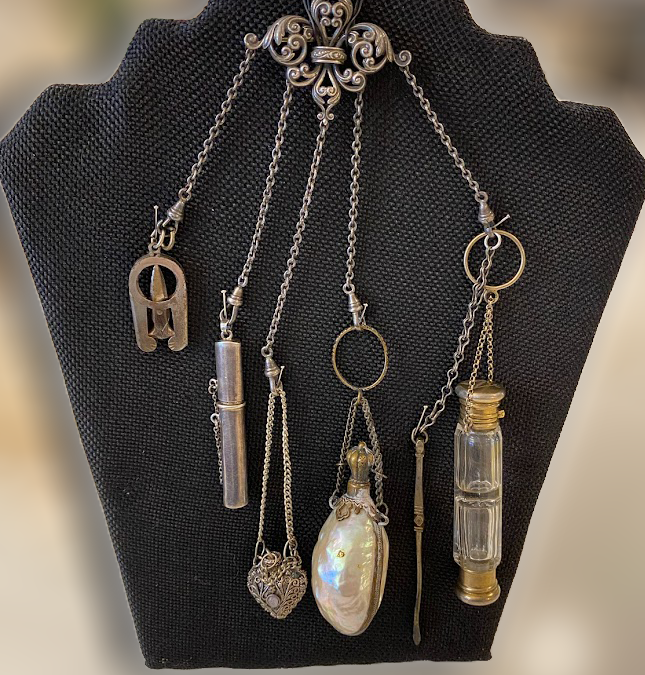The 19th century chatelaine is a relatively new artifact in the museum’s collection. Curator Annie Anderson acquired it at a historic North Carolina auction house in 2019 to use in the museum’s “Care and Comfort in the Sick Room” exhibit. At the turn of the 20th century, most healthcare happened in the home. Women often found themselves in the sick room as caregivers to family members who fell ill to one of the many communicable diseases prevalent during the Victorian era. Illnesses such as tuberculosis, diphtheria, scarlet fever, and whooping cough often led to a lengthy convalescence.
A chatelaine would adorn a woman’s waist to help her keep necessary items within easy reach. A nurse’s chatelaine might feature scissors and a thermometer, while a seamstress might prefer a thimble and case for needles. The pendants on the museum’s chatelaine include a needle holder, perfume bottle, folding scissors and perhaps a small bottle for smelling salts.
More detailed information about chatelaines can be found in the definitive text, “Chatelaines: Utility to Glorious Extravagance,” by Genevieve E. Cummins and Nerylla D. Taunton, 1994.

Nurse Lillian Wald wears a chatelaine around her waist. Wald was an early public health nursing advocate.
A long chatelaine is featured on this nurse’s waist.
A chatelaine adorns the waist of this Victorian woman’s dress.

